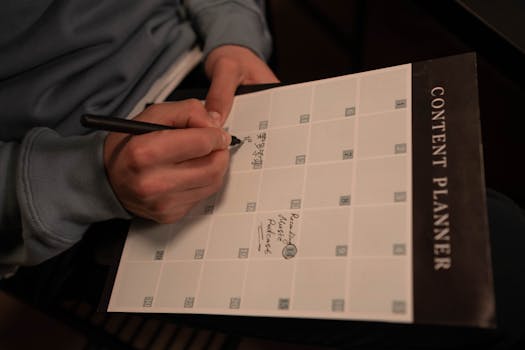
Introduction to Time Management

Time management is a critical skill in today’s fast-paced world. Whether you’re a student, a professional, or a busy individual juggling multiple roles, mastering the art of managing your time can lead to significantly improved productivity and well-being. By implementing effective time management strategies, you can take control of your schedule, reduce stress, and achieve your goals. This blog post will explore various strategies you can use to enhance your time management skills.
Section 1: Understanding Time Management

Before diving into strategies, it’s essential to understand what time management is. At its core, time management involves organizing and planning how to divide your time among various activities. Good time management enables you to work smarter, not harder, allowing you to prioritize tasks effectively.
Many underestimate the importance of effective time management. Poor time management can lead to stress, missed deadlines, and a feeling of being overwhelmed. By taking the time to prioritize and plan your tasks, you can avoid emergencies and make more time for your pursuits, ultimately increasing your quality of life.
Section 2: Strategies for Time Management

2.1 Prioritization of Tasks
One of the foundational skills in time management is the art of prioritizing tasks. The first step is to differentiate between urgent and important tasks—a method pioneered by Eisenhower and known as the Eisenhower Matrix. You can organize your tasks into four quadrants:
- Urgent and Important: Do these tasks as soon as possible.
- Important but Not Urgent: Schedule these tasks to complete later.
- Urgent but Not Important: Delegate these tasks if possible.
- Not Urgent and Not Important: Eliminate these tasks.
2.2 Set SMART Goals
Goals are always easier to achieve when set correctly. Implementing the SMART goals framework can greatly enhance your achievements. SMART stands for:
- Specific: Clarify exactly what you want to achieve.
- Measurable: Establish criteria for measuring progress.
- Achievable: Ensure that your goal is attainable.
- Relevant: Choose goals that matter to you and align with your values.
- Time-bound: Set deadlines to create urgency.
2.3 Make Use of Technology
In our digital world, several tools can facilitate effective time management. Several apps and software tag features such as reminders, to-do lists, and calendar integrations to keep you organized. Applications like Todoist, Trello, or Microsoft Planner can help you manage your tasks more efficiently.
Section 3: Creating a Structured Environment

3.1 Designate Workspace
Establishing a comfortable and distraction-free workspace is vital for productive work. Ensure your working environment is conducive to focusing on tasks at hand to keep your mind clear and organized.
3.2 Use Time Blocks
Utilizing time-blocking techniques can significantly enhance productivity. This approach breaks your day into blocks of time, each assigned to specific tasks. By maintaining concentration in focused intervals, you process tasks more efficiently. Consider methods such as the Pomodoro Technique, where you work for 25 minutes and take a 5-minute break, to maximize focus and minimize burnout.
Conclusion

Effective time management is a skill that can transform the way you work and live. By implementing the strategies discussed—including prioritizing tasks, setting SMART goals, utilizing technology, tailoring your work environment, and employing structured systems—you’re on the path to achieving more with your time. Remember that good time management is a discipline, and it requires continual effort and adjustment. Embrace the processes that contribute to efficient usage of your time. Become purposeful about how you manage your hours to achieve your goals and live a less stressful life.
Takeaways
- Establish proactive prioritization based on urgency and importance.
- Set SMART goals to enhance clarity and focus.
- Leverage technology to organize and streamline your tasks.
- Create a structured work environment to minimize distractions.
- Experiment with time-blocking to improve work intensity.
Additional Resources

1. MindTools – Time Management Toolkit






